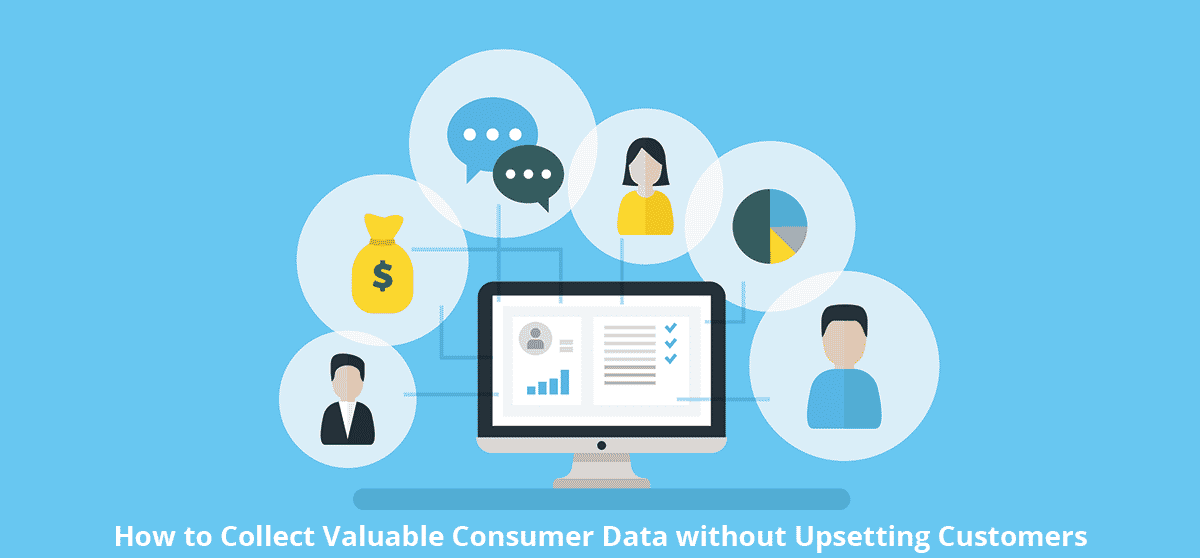Welcome to the wild, wonderful world of customer data, where numbers dance, patterns emerge, and insights reign supreme. In today’s business landscape, customer data is more valuable than gold. Think of it as the secret sauce that can transform your business from “meh” to “magnificent.”
So, why all the fuss about customer data? Well, imagine trying to navigate a maze blindfolded. That’s what making business decisions without customer data feels like. By turning raw data into actionable insights, you’re essentially getting a map with a big red “X” marking the spot of hidden treasure.
Mastering this process is like unlocking a superpower. You’ll make decisions that are sharper than a chef’s knife, keep your customers grinning from ear to ear, and watch your business soar like an eagle on caffeine.
Buckle up, because we’re about to dive into the magical realm of customer data and uncover how to wield its power for epic results.
Understanding Customer Data
What is Customer Data?
Alright, let’s demystify this buzzword: customer data. Think of customer data as the breadcrumbs your customers leave behind as they interact with your business. These crumbs come in various flavors:
- Demographic Data: This is the who. It includes age, gender, income, education level, and other basic traits.
- Behavioral Data: This is the what. It tracks what customers do, like their browsing habits, purchase history, and product preferences.
- Transactional Data: This is the how much. It covers details of transactions, including what was bought, when, and for how much.
- Psychographic Data: This is the why. It dives into customers’ interests, values, and lifestyles.
Sources of Customer Data
Where do you find these golden nuggets? Here are some prime locations:
- Website Analytics: Tools like Google Analytics give you the lowdown on who’s visiting your site, what they’re looking at, and how long they’re sticking around.
- Social Media: Platforms like Facebook, X (previously, Twitter), and Instagram are treasure troves of customer preferences and behaviors.
- CRM Systems: Customer Relationship Management systems help you keep track of interactions, sales, and customer support history.
- Surveys and Feedback Forms: Direct insights from your customers’ mouths (or keyboards).
- Point of Sale Systems: These capture transactional data right at the checkout.
Why Customer Data Matters
Why should you care about all these data points? Simple: understanding your customers is like having a cheat code for your business. Here’s how savvy companies are using customer data to their advantage:
- Personalization: By analyzing customer data, businesses can tailor their offerings to individual preferences. Netflix, for example, uses your viewing history to recommend shows and movies you’ll likely binge-watch next.
- Customer Segmentation: Companies like Amazon use data to segment their customers into different groups, allowing for targeted marketing strategies. This means you get relevant ads, not just random ones.
- Improving Customer Experience: Data helps businesses understand pain points and areas for improvement. Starbucks uses customer feedback and purchase data to refine their menu and service.
By tapping into customer data, you can anticipate needs, exceed expectations, and build a loyal customer base that keeps coming back for more. Ready to start collecting those breadcrumbs? Let’s move on!
Collecting the Right Data
Identifying Key Data Points
Alright, now that we know what customer data is, let’s talk about which data points are the VIPs of your business. Not all data is created equal, so it’s crucial to know what to focus on for different objectives:
- Customer Retention: For this, behavioral data like purchase frequency, product usage, and customer feedback are gold. They help you understand what keeps customers coming back.
- Marketing Campaigns: Demographic data and social media interactions are your best friends here. Knowing who your customers are and how they engage with your content allows for precise targeting.
- Product Development: Transactional data and psychographic insights are key. They tell you what’s selling, what’s not, and why customers are or aren’t buying certain products.
Tips for Prioritizing Data Collection Efforts
- Align with Business Goals: Start with your business objectives and identify the data points that directly impact those goals.
- Quality over Quantity: More data isn’t always better. Focus on collecting high-quality data that offers real insights.
- Customer Journey Mapping: Understand the key touchpoints in your customer’s journey and collect data at each stage. This will give you a comprehensive view of their experience.
Tools and Technologies for Data Collection
Now, let’s get into the nitty-gritty of how you actually collect all this valuable data. Here are some popular tools and technologies that can make your life easier:
- Google Analytics: The go-to tool for website data. It tracks everything from page views to user behavior and provides in-depth reports to help you understand your audience.
- CRM Software: Tools like Salesforce, HubSpot, and Zoho CRM keep track of customer interactions, sales, and support history, giving you a 360-degree view of your customer relationships.
- Social Media Analytics Tools: Platforms like Hootsuite, Sprout Social, and Facebook Insights help you monitor social media engagement, track campaign performance, and understand audience demographics.
- Survey Tools: Tools like SeVO Poll, SurveyMonkey, and Typeform allow you to gather direct feedback from your customers.
Tips for Selecting the Right Tools
- Define Your Needs: Identify what specific data you need to collect and find tools that specialize in those areas.
- Ease of Use: Choose tools that are user-friendly and easy to integrate with your existing systems.
- Scalability: Ensure the tools can grow with your business. You don’t want to outgrow your data collection tools too quickly.
- Budget: Consider your budget and look for tools that offer the best value for money. There are plenty of free or affordable options that are highly effective.
By strategically collecting the right data and using the best tools for the job, you’ll be well on your way to uncovering insights that can drive your business forward. Let’s keep this momentum going!
Data Analysis Techniques
Basic Data Analysis Methods
Alright, now we’ve got all this fabulous data—what do we do with it? Enter data analysis, the process of turning raw data into meaningful insights. Let’s start with the basics:
- Descriptive Analysis: This is your “what happened” analysis. It’s all about summarizing historical data to understand past behavior. Think of it as the highlight reel of your business operations. For example, if you see a spike in sales during December, descriptive analysis tells you that December is a hot month for your business.
- Diagnostic Analysis: Now we move to “why did it happen?” This method digs deeper into data to identify causes and correlations. If your sales spiked in December, diagnostic analysis might reveal it was due to a holiday promotion or a viral marketing campaign.
- Predictive Analysis: Here’s where we get a bit futuristic. Predictive analysis uses historical data to forecast future trends. Imagine having a crystal ball that tells you sales will likely increase by 20% next December if you run the same promotion. That’s predictive analysis at work.
- Prescriptive Analysis: This is the “what should we do about it?” step. Prescriptive analysis provides actionable recommendations based on predictive data. For instance, it might suggest increasing your ad spend in November to maximize that December sales spike.
Advanced Data Analysis Techniques
Ready to level up? Let’s dive into some advanced techniques that can supercharge your data analysis:
- Machine Learning: This involves training algorithms to recognize patterns and make decisions based on data. Machine learning can help you personalize customer experiences at scale. For example, Amazon’s recommendation engine uses machine learning to suggest products based on your browsing and purchase history.
- Artificial Intelligence (AI): AI takes machine learning to the next level, enabling systems to learn, reason, and self-correct. Chatbots, like those used by many customer service departments, leverage AI to understand and respond to customer inquiries effectively, improving the overall customer experience.
Real-Life Examples
- Netflix: Netflix uses machine learning algorithms to analyze viewing habits and predict what shows or movies you might like. This not only keeps viewers engaged but also helps Netflix decide what content to produce next.
- Google: Google’s AI-driven search algorithms continuously learn from user queries to deliver more accurate search results. It’s why Google often seems to know what you’re looking for before you’ve even finished typing.
- Spotify: Spotify’s Discover Weekly playlist is a great example of predictive and prescriptive analytics. It analyzes your listening habits and those of users with similar tastes to create a personalized playlist every week, keeping you hooked on new music.
By combining basic and advanced data analysis techniques, you can uncover insights that not only explain past performance but also predict future trends and recommend actionable strategies. Ready to become a data analysis wizard? Let’s move on to turning these insights into action!
Turning Data into Actionable Insights
Data Visualization
Welcome to the art of making data not just understandable, but downright fascinating. Data visualization is your magic wand here. It’s all about transforming complex data sets into visual stories that anyone can grasp at a glance.
Importance of Data Visualization
Imagine trying to explain your business’s monthly performance using just a spreadsheet filled with numbers. Not exactly riveting, right? Now, imagine the same data as colorful charts and interactive dashboards. Boom! Instantly, it’s more engaging and easier to understand. Visualization helps you see the forest and the trees, making it easier to spot trends, outliers, and patterns.
Tools and Best Practices for Effective Data Visualization
Tools: There are fantastic tools out there like Tableau, Power BI, and Google Data Studio. These tools allow you to create stunning visuals without needing a degree in graphic design.
Best Practices:
- Keep it Simple: Don’t overwhelm your audience with too much information. Stick to key metrics and clear visuals.
- Use the Right Chart Type: Match your data to the appropriate chart. Bar charts for comparisons, line charts for trends, pie charts for proportions.
- Tell a Story: Every visual should have a narrative. What’s the main takeaway? Make sure it’s obvious.
Interpreting Data Trends
Alright, you’ve got your snazzy visuals. Now, let’s decode them like pros. Spotting and interpreting trends in data is where the real magic happens.
How to Spot and Interpret Trends and Patterns in Data
- Look for Consistent Patterns: Trends are usually identified by looking at data over time. Is there a consistent rise or fall? Are there recurring spikes?
- Compare and Contrast: Compare different data sets to identify correlations. For example, if sales increase whenever you run a social media campaign, that’s a pattern worth noting.
- Ask Why: Don’t just observe trends—question them. Why did sales dip last March? Why is customer engagement higher on weekends?
Examples of Actionable Insights Derived from Data Trends
- Seasonal Sales Trends: A retail business might notice that sales peak in December. Actionable insight: ramp up marketing efforts and stock levels in the months leading to December.
- Customer Behavior Patterns: An e-commerce site might find that users abandon their carts more frequently on mobile devices. Actionable insight: optimize the mobile shopping experience.
Making Data-Driven Decisions
Now, let’s turn those insights into actions that can drive your business forward. Making data-driven decisions involves integrating insights into your strategic planning.
Steps to Integrate Data Insights into Decision-Making Processes
- Define Clear Objectives: Know what you want to achieve—whether it’s increasing sales, improving customer satisfaction, or reducing churn.
- Gather Relevant Data: Use the right tools to collect and visualize data relevant to your objectives.
- Analyze and Interpret: Use both basic and advanced data analysis techniques to understand what the data is telling you.
- Make Informed Decisions: Base your decisions on data insights, not just gut feelings. For example, if data shows that email marketing drives conversions, allocate more budget to it.
- Monitor and Adjust: Keep an eye on outcomes and be ready to pivot if the data suggests you should.
Case Studies of Companies that Successfully Implemented Data-Driven Strategies
- Amazon: Amazon’s recommendation engine, powered by data insights, reportedly drives 35% of its sales. By analyzing what customers buy and browse, Amazon can suggest products they are likely to purchase.
- Netflix: Netflix uses data to decide which shows to produce. The success of “House of Cards” was largely due to Netflix’s data-driven decision to invest in it, knowing their audience’s preferences.
- Starbucks: Starbucks uses data analytics to choose store locations, design personalized promotions, and refine their menu. Their loyalty program provides a treasure trove of customer data that informs these decisions.
By visualizing data effectively, interpreting trends, and making informed decisions, you’re not just gathering data—you’re turning it into a powerhouse of strategic insights. Ready to tackle some common challenges? Let’s go!
Overcoming Common Challenges
Data Quality Issues
Data is your trusty sidekick, but even superheroes have their off days. Incomplete data, inaccuracies, and inconsistencies can turn your analytics dream into a nightmare. Let’s tackle these data quality gremlins head-on.
Common Data Quality Problems
- Incomplete Data: Missing entries can skew your analysis. Imagine trying to solve a puzzle with missing pieces—frustrating, right?
- Inaccuracies: Errors in data entry or outdated information can lead to false conclusions. Think of it as using a broken compass; you’re bound to get lost.
- Inconsistencies: Data that’s not standardized (e.g., different date formats) can create chaos in your analysis. It’s like trying to read a book with random letters capitalized—confusing and error-prone.
Solutions and Best Practices for Ensuring Data Quality
- Data Validation: Implement validation rules at the point of entry to catch errors early. For example, ensure email fields contain “@” and domain names.
- Regular Audits: Conduct periodic data audits to clean up inaccuracies and fill in missing information.
- Standardization: Use consistent formats for dates, currency, and other data types. Implementing a data dictionary can help maintain uniformity.
- Automate Where Possible: Utilize automation tools to reduce manual entry errors. Tools like Zapier can help automate data flows and ensure consistency.
Training: Ensure your team is trained in best practices for data entry and management.
Privacy and Security Concerns
In the digital age, data privacy and security are as crucial as oxygen. Mishandling customer data can lead to trust issues, legal troubles, and a tarnished reputation. Let’s make sure your data is as secure as Fort Knox.
Importance of Data Privacy and Security
- Trust: Customers trust you with their personal information. Violating this trust can lead to loss of customers and brand damage.
- Legal Compliance: Regulations like GDPR and CCPA set strict guidelines on data handling. Non-compliance can result in hefty fines.
- Risk Mitigation: Data breaches can cost millions and lead to significant operational disruptions. Preventative measures are far cheaper and less damaging than dealing with the fallout of a breach.
Tips for Maintaining Compliance with Data Protection Regulations
- Understand the Regulations: Familiarize yourself with relevant data protection laws like GDPR (General Data Protection Regulation) and CCPA (California Consumer Privacy Act).
- Data Minimization: Collect only the data you need. The less data you have, the less there is to protect.
- Secure Storage: Use encryption and secure storage solutions to protect data. Ensure your databases and storage systems are regularly updated and patched.
- Access Controls: Limit access to data based on role and necessity. Implement strong authentication measures like multi-factor authentication.
- Regular Training: Educate your team about data privacy and security best practices. Regularly update training materials to reflect new threats and regulations.
- Transparency: Be clear with customers about what data you collect and how it’s used. Provide easy options for them to manage their data preferences.
- Regular Audits and Assessments: Conduct regular security audits and data protection impact assessments (DPIAs) to identify and mitigate risks.
By addressing data quality issues and prioritizing privacy and security, you’ll not only ensure compliance but also build a foundation of trust and reliability with your customers. Ready to wrap things up? Let’s move to the conclusion!
Key Takeaways
Let’s take a quick trip down memory lane and recap the key points we’ve covered in our quest to turn customer data into actionable insights:
- Understanding Customer Data: We broke down what customer data is, the different types (demographic, behavioral, transactional, etc.), and where to find it (website analytics, social media, CRM systems).
- Collecting the Right Data: We identified which data points are most valuable for different business objectives, shared tips on prioritizing data collection, and explored popular tools and technologies for data collection.
- Data Analysis Techniques: We delved into basic data analysis methods like descriptive, diagnostic, predictive, and prescriptive analysis, and ventured into advanced techniques like machine learning and AI with real-life business applications.
- Turning Data into Actionable Insights: We highlighted the importance of data visualization, how to spot and interpret trends, and the steps to integrate data insights into decision-making processes, supported by case studies of successful companies.
- Overcoming Common Challenges: We addressed common data quality problems, provided solutions for ensuring data quality, and shared tips for maintaining data privacy and security in compliance with regulations like GDPR and CCPA.
The journey from raw data to actionable insights can feel like navigating a labyrinth. However, as we’ve seen, it’s a journey worth taking. By effectively collecting, analyzing, and interpreting customer data, you can unlock a treasure trove of insights that drive smarter decisions, enhance customer satisfaction, and fuel business growth.
Actionable insights aren’t just about understanding what has happened—they’re about predicting what will happen and prescribing the best course of action. It’s like having a roadmap that not only shows you where you are but also guides you to where you want to be.
So, what are you waiting for? It’s time to harness the power of your customer data and transform it into actionable insights. Start by collecting the right data, use the best tools for analysis, visualize your findings, and most importantly, let data drive your decisions.









